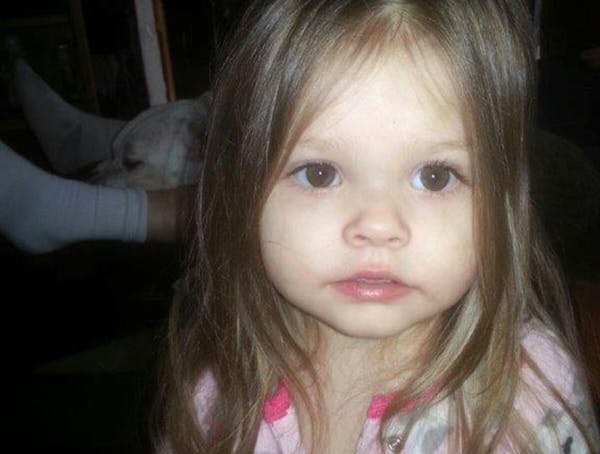Hennepin County child protection officials were made aware early last year of a potentially unsafe living arrangement for the 2-year-old girl who died in south Minneapolis this week under suspicious circumstances, according to the girl's father and former neighbors.
It's unclear if the 17-year-old boy arrested in connection with Sophia O'Neill's death Wednesday was involved with her family in 2014, when the baby was taken from her maternal grandmother's Minneapolis apartment by police and placed in temporary protective custody, the father and neighbors said.
The teenager, the boyfriend of Sophia's 20-year-old mother, remained jailed but uncharged Friday after the attorney's office was granted a charging-deadline extension to Monday afternoon.
The child's biological father, Max O'Neill, 22, who shared custody of Sophia with her mother, said the toddler died of internal bleeding Wednesday night at Hennepin County Medical Center, where doctors told him she had suffered a ruptured kidney and pancreas. O'Neill said that he had seen injuries on Sophia earlier this year that he suspected were the result of abuse and reported them to child protection in February, but that they didn't investigate.
Janine Moore, director of the county's Children and Family Services, said she couldn't discuss Sophia's case specifically, but that in general, a child's suspicious death triggers an investigation by her office.
"Any child that passes away due to nonaccidental causes is concerning to us, especially if it happens by a parent or caregiver," she said.
Sophia's mother, who has dated the suspect for about a year, couldn't be reached for comment Friday. She has taken down her Facebook page and changed her telephone number, friends said.
Police declined again Friday to offer details about the case, and as of Friday evening, the Hennepin County medical examiner had not released the cause of Sophia's death. While some relatives and friends have raised concerns about her care in the wake of her death, the suspect's grandmother has described the teenager as a loving caretaker who frequently baby-sat for Sophia.
Just before noon Wednesday, officers responded to an emergency call about a child not breathing in the 3800 block of 30th Avenue S. Moments earlier, the 17-year-old, who lived with his grandmother and with whom Sophia and her mother had been staying for a couple of weeks, sought help from a neighbor after Sophia became unresponsive.
The suspect's grandmother said Thursday night that Sophia had been sick Tuesday, but seemed better Wednesday after being given pain relief medicine. The grandmother went to work Wednesday morning and Sophia's mother went to a doctor's appointment, while the 17-year-old boy stayed home with the child. The boy's grandmother has said she doesn't believe the boy harmed the child.
Max O'Neill, who last saw his daughter at the end of April, said that months before he reported seeing bruises on Sophia to Child Protective Services in February, police took Sophia from a previous residence to St. Joseph's Home for Children, a temporary shelter for children in crisis in Minneapolis. In that incident, she was taken from the Minneapolis apartment of her grandmother, who at the time was caring for the girl, when a neighbor called police over safety concerns, according to O'Neill and neighbors.
Child protection authorities receive a report when a child is taken to St. Joseph's, Moore said. The Star Tribune could not obtain the police report about Sophia being removed from her grandmother's apartment because the information isn't public, according to a Minneapolis police spokesman.
How the system works
Last year, Hennepin County's child protection division received 15,500 calls or inquiries, Moore said. About one-third of such calls are sent to the division's investigative unit after an assessment by the screening staff. Sometimes more information must be gathered before a determination is made about the child's situation.
"Many times the general public can get frustrated when they get concerned over a child and they want something to be done," she said. "You have to be careful not to infringe on a family's rights based upon a value or observation of another person."
If a case makes it to the investigative unit, a staffer will gather evidence and assess the situation. If criminal behavior is involved, police often will ask child protection to wait until the police investigation is completed, Moore said.
Of 5,000 cases handled by the investigative unit, about 1,500 will result in the child being placed in foster care or court-order jurisdiction, which involves the family working closely with child protection to prevent future maltreatment. Sophia O'Neill was not under court-ordered jurisdiction.
If all such efforts to improve a child's situation fail, the county will transfer legal custody of the child or terminate the parent's rights to the child, Moore said.
Staff writer Liz Sawyer contributed to this report. David Chanen • 612-673-4465
8 months in jail for Blaine man who caused 120-mph crash hours after he was caught speeding

Daughter sues St. Paul, two officers in Yia Xiong's killing

